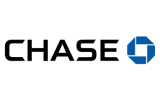Current Accounts That Pay Interest
Current Accounts That Pay Interest Up To 2.75% AER
High Interest Current Accounts
Current Accounts that Pay Interest
Many people rely on instant access savings accounts for their emergency funds – as a safe place to keep easily-accessible cash for a rainy day. However, with this year’s crop of easy access savings accounts currently hovering around the 1.5% mark, the returns on this kind of savings option could look less than tempting. Therefore, it may come as a surprise to find that you could get 5% interest from a current account. Use the table to compare current account that pay interest, or click on the links to find out more and apply online.
Why choose a current account that pays interest?
While the traditional advice has been to move any spare cash into a savings account rather than letting it languish in a current account, in these times of record low interest rates it can actually make more sense to stash your emergency cash in a current account. Some accounts pay up to 5% interest – that’s more than double the interest rate you would receive from a traditional instant access savings account.
As an example, Nationwide’s FlexDirect account offers 5% in-credit interest on balances up to £2,500 for the first year, which works out at 4.89% gross pa. Meanwhile, Santander’s 123 Current Account pays up to 1.5% interest on balances over £3,000. Both these rates are significantly better than current easy access savings rates and also beat several fixed rate accounts, with the added bonus of being able to access your money whenever you need to.
What are the conditions?
This method of saving may not be right for everyone, and there are several points you should take into account before opening a current account for this purpose:
- You may need to have a set number of Direct Debits going out from the account each month in order to qualify for the interest rate deal.
- You will need to make sure that you pay in any stipulated minimum amount each month. If you fail to do so you will not usually receive any interest for that month.
- The money paid into the account will usually need to come from an external source – for example, from an account with a different bank, or in the form of a direct salary payment.
- The preferential interest rate on offer may be fixed term – for example, you may only be eligible for in-credit interest for 12 months after account opening. Therefore you may wish to shop around for an alternative savings option when the deal comes to an end.
How to use a current account as a savings account
If you wanted to use one of these account as a savings account you could do so by transferring a set amount from your main bank account into the interest-paying current account at the beginning of each month. You can then transfer the majority of this money back to your main account, leaving the amount you want to save in the interest paying account.
For example, if you wanted to save £200 a month, you would transfer in the minimum amount required and then move £800 into your everyday current account. The remaining £200 will then sit in your interest-paying current account, earning you interest, for the rest of the month. Because you are not using the interest-paying current account as an everyday spending account, you won’t be tempted to spend money allocated as savings that could otherwise be earning you interest.
For people who are just starting to save, or who want a top-up emergency fund that’s easy to access and also pays a competitive rate of interest, current accounts that pay interest could provide an alternative to existing instant access savings accounts.
What if there are any problems?
And the switching service is covered by a guarantee: the new bank must refund you if there are any charges because payments didn’t go through on time. But you have to ask them for this.
Can I keep my old current account open when I switch?
What about transferring “recurring payments”?
Because they’re linked to a card rather than directly to your bank account, they’re not included in the switching service (or covered by the guarantee).
It’s not always clear which are your continuous payment authorities: you won’t find them listed on your online banking portal. When you set them up you were asked for you card details (“please read me the long card number”) rather than your bank account and sort code numbers.
You’ll need to check your monthly card statements: any regular payments going out each month that are not marked as DD (direct debit) or SO (standing order) are likely to be continuous payment authorities.
If you want to keep paying for this service (or loan) in this way, you’ll need to contact each provider and tell them your new card details as soon as you have them.
This may sound like a lot of bother, but it is useful to check periodically what’s going out of your account regularly: there may be services you’re not using (such as fast delivery, or additional online data storage) that you want to cancel.
What about the individuals who have my bank account details, for sending occasional payments?
It’s probably not a good idea to just email all your Contacts with your new account details. If you’re concerned about email security, the most secure way of sending bank account details to specific people is via WhatsApp.
And if any payments are accidentally made to your old account, for 36 months (three years) after you’ve switched, your new bank or building society will arrange for any payments to be automatically redirected to your new account. They will also contact the sender and give them your new account details.
When should I choose to make the transfer?
If all your regular payments tend to go out of your account around the same time it’s best to choose a time of the month when your bank account isn’t so busy.




